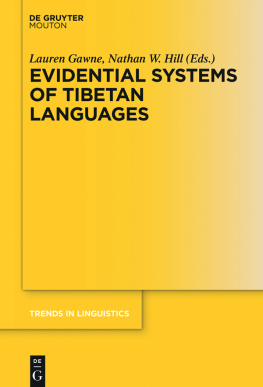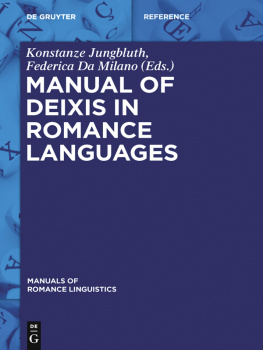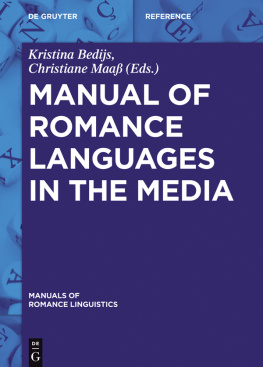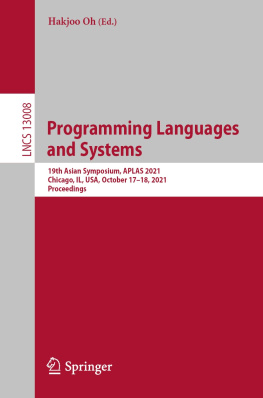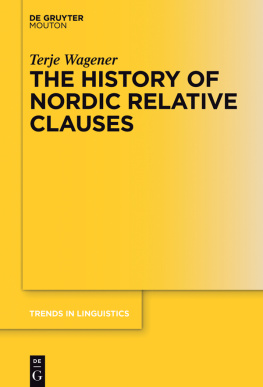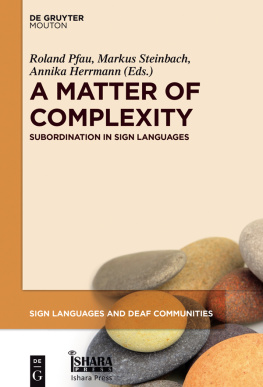Contents
Guide
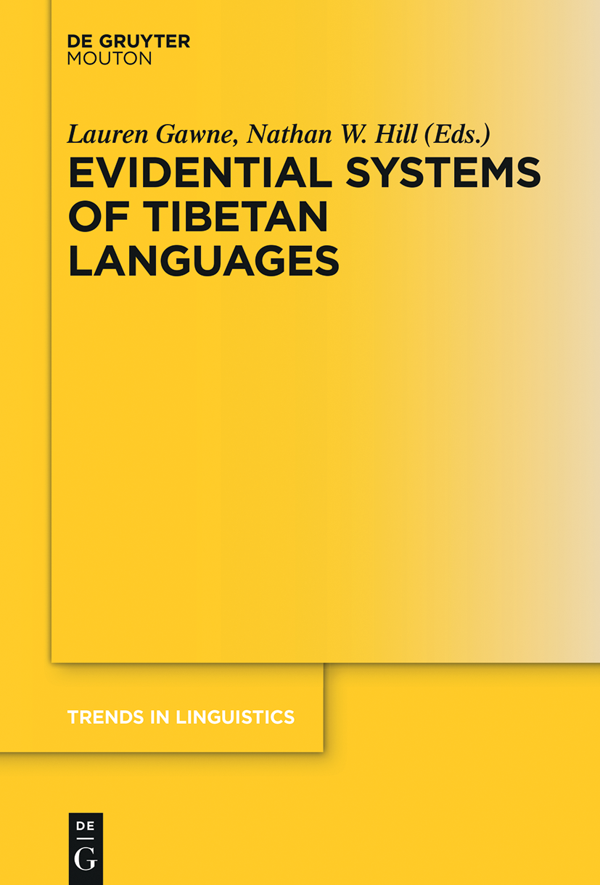
Lauren Gawne, Nathan W. Hill (Eds.)
Evidential Systems of Tibetan Languages
Trends in Linguistics Studies and Monographs

Editor
Volker Gast
Editorial Board
Walter Bisang
Jan Terje Faarlund
Hans Henrich Hock
Natalia Levshina
Heiko Narrog
Matthias Schlesewsky
Amir Zeldes
Niina Ning Zhang
Editor responsible for this volume
Walter Bisang and Volker Gast
Volume 302
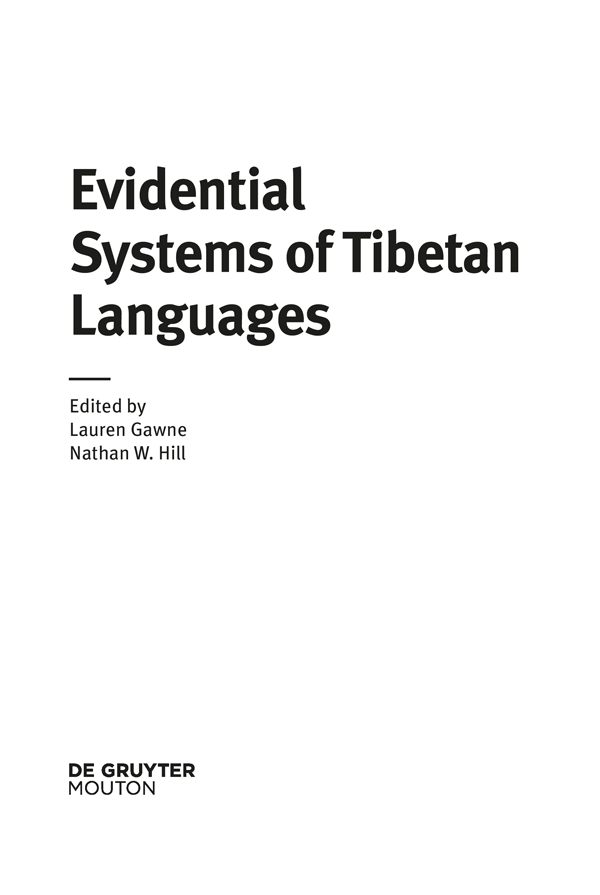
ISBN 978-3-11-046018-6
e-ISBN (PDF) 978-3-11-047374-2
e-ISBN (EPUB) 978-3-11-047187-8
ISSN 1861-4302
Library of Congress Cataloging-in-Publication Data
A CIP catalog record for this book has been applied for at the Library of Congress.
Bibliografische Information der Deutschen Nationalbibliothek
The Deutsche Nationalbibliothek lists this publication in the Deutschen Nationalbibliografie; detailed bibliographic data are available on the internet http://dnb.dnb.de.
2017 Walter de Gruyter GmbH, Berlin/Boston
www.degruyter.com
Nathan W. Hill and Lauren Gawne
1The contribution of Tibetan languages to the study of evidentiality
Note: A list of abbreviations appears at the end of this chapter. Where possible, glosses in citations from other authors have been regularized to the Leipzig Glossing Rules.
In his Adhyy the great Sanskrit grammarian Pini cryptically notes the grammatical encoding of information source with the words paroke li one uses the perfect tense in reference to past action not linked to the present day and not witnessed (Hock 2012: 93101); so began the study of evidentiality. Although Tibetan grammatical studies, like all domains of traditional Tibetan high culture, build upon Indian models, the Tibetan grammarians did not inherit an explicit awareness of evidentiality.
Alexandra Aikhenvalds 2004 monograph Evidentiality is the most thorough typological treatment of evidentiality to date, drawing on grammatical descriptions of over 500 languages (Aikhenvald 2004: xii). While Aikhenvald concedes that evidentiality in Tibetan varieties was hardly mentioned (Aikhenvald 2012: 467, Note 20) in her study, she does make reference to four Tibetan varieties, viz. Ladhaki, Amdo, Sherpa, and Lhasa. The World Atlas of Language Structures (WALS) survey of evidentiality draws on three of the same four Tibetan languages, omitting Lhasa, on the basis of the same secondary literature as Aikhenvald. There is scope both for increased documentation of Tibetan evidential systems and for typological work on evidentiality to make more ample use of the Tibetan data already available. Such work will deepen the understanding of specific Tibetan varieties and improve typological theorizing on evidentiality (cf. Hill 2013a: 5152; Tournadre, this volume). By making the results of research on Tibetan evidential systems more conveniently accessible, the work in the readers hands aids in filling these lacunae.
The title of this work and this introduction refer to the varieties of Tibetan spoken today as Tibetan languages (we discuss this terminology in ). Just as there is variation in how Tibetan languages have grammaticalised evidentiality, the speakers of these languages do not necessarily consider themselves as belonging to a single unified group. Tibetan language speakers reside in Tibet, other parts of China, India, Nepal, Bhutan, and Pakistan. Many Tibetan language speakers will not refer to themselves as Tibetan, but consider themselves to be a member of a specific cultural group, such as Sherpa, or Bhutia. In addition, not all Tibetan language speakers share the same Buddhist culture, e.g. the Purik and the Balti are predominantly Muslim (Zemp, this volume), and many Buddhist groups like the Yolmo have a synchronous indigenous tradition (Desjarlais 1992). This volume attempts to give some illustration of the diversity of Tibetan languages, with contributions on varieties from China, Nepal, India and Bhutan.
Lhasa Tibetan is far and away the best described Tibetan variety. Consequently, to the extent typologists make reference to Tibetan at all, they rely primarily on Lhasa Tibetan and traditions of its analysis, in particular conjunct-disjunct and egophoric. The three evidential categories of Lhasa Tibetan (called personal, experiential, and factual in this introduction) serve as the point of departure in the exploration of other Tibetan varieties and in the study of the development of evidentials throughout Tibets long literary history. This introduction describes in turn, the history of the study of Lhasa Tibetan evidentiality ( we discuss the conventions and nomenclature of the volume overall. Throughout this introduction we offer a standardized terminology (personal, factual, and experiential) as equivalences to the terminology of specific authors, in order to facilitate comparison among authors and Tibetan varieties.
While we have given a definition of Tibetan, we have not given a definition of evidentiality. Aikhenvalds definition of evidentiality as a grammatical expression of information source (2015: 239) has a simplicity, and certainly has popularity. This rather narrow definition has perhaps led her to miss the nature of evidentiality in languages like Tibetan, which we discuss below. Tournadre and LaPolla (2014) also believe that Aikhenvalds definition is too narrow. After a survey of some Tibetan varieties, and beyond, they give a definition of the representation of source and access to information according to the speakers perspective and strategy (Tournadre and LaPolla 2014: 240). The inclusion of access to information and speakers perspective is intended to tease out some of the subtleties of personal evidentiality, which we discuss below. Attempting to find one definition of evidentiality that applies to all languages may prove elusive. As can be seen in this volume, even closely related languages may use cognate forms in very different ways. Similarly, linguists from different theoretical backgrounds may approach the question of evidentiality in different ways. We have not constrained our authors by asking them to employ a particular definition of evidentiality in their analyses.
As a related issue, attempting to articulate the relationship between evidentiality and other grammatical features, particularly those contextually-dependent features related to speaker stance, is unlikely to be a successful endeavor at the cross-linguistic level. Our authors expand on the interaction of evidentiality with other grammatical features as they see fit for a particular language. For many of our authors an understanding of modality, speaker perspective, and interrogativity within a particular language are vital to an understanding of evidentiality. For example, for Hyslop and Tshering (this volume) evidentiality is entirely subsumed within the epistemic system. In order to keep this introduction to a containable size, we focus on the grammatical categories of evidentiality specifically, but we also acknowledge that within a single language these cannot be understood in isolation from other features of the language.
1.1The study of Lhasa Tibetan evidentiality
Research on Lhasa Tibetan evidentiality divides into three groups: 1. early pedagogical grammars, where evidentiality is treated more or less as a form of person agreement, 2. linguistic research where the three-term Lhasa system is analysed as reflecting binary settings of interacting features, 3. linguistic research where the three semantic categories encoded by the evidential system are described as isomorphic with the three morphosyntactic categories used to encode them. These three approaches broadly correspond with chronologically distinct stages in research on Tibetan evidentiality, and reflect an overarching movement away from a priori commitments to person and toward characterizations that are both structurally verifiable and motivated by usage in discourse. However, there are striking exceptions to the chronological pattern. While Yukawa Yasutoshi already championed the third approach in 1966, some typologists continue today to rely on outdated treatments of Tibetan evidential systems in discussions of person agreement (see Bickel and Nichols 2007: 223224; Aikhenvald 2015: 257). Although a useful heuristic, the division of researchers among these three groups is somewhat arbitrary. No researcher unambiguously equates the Lhasa system with person agreement of the Indo-European type, to do so would be foolish. Concomitantly, until recently few researchers vehemently disavowed grammatical person.

